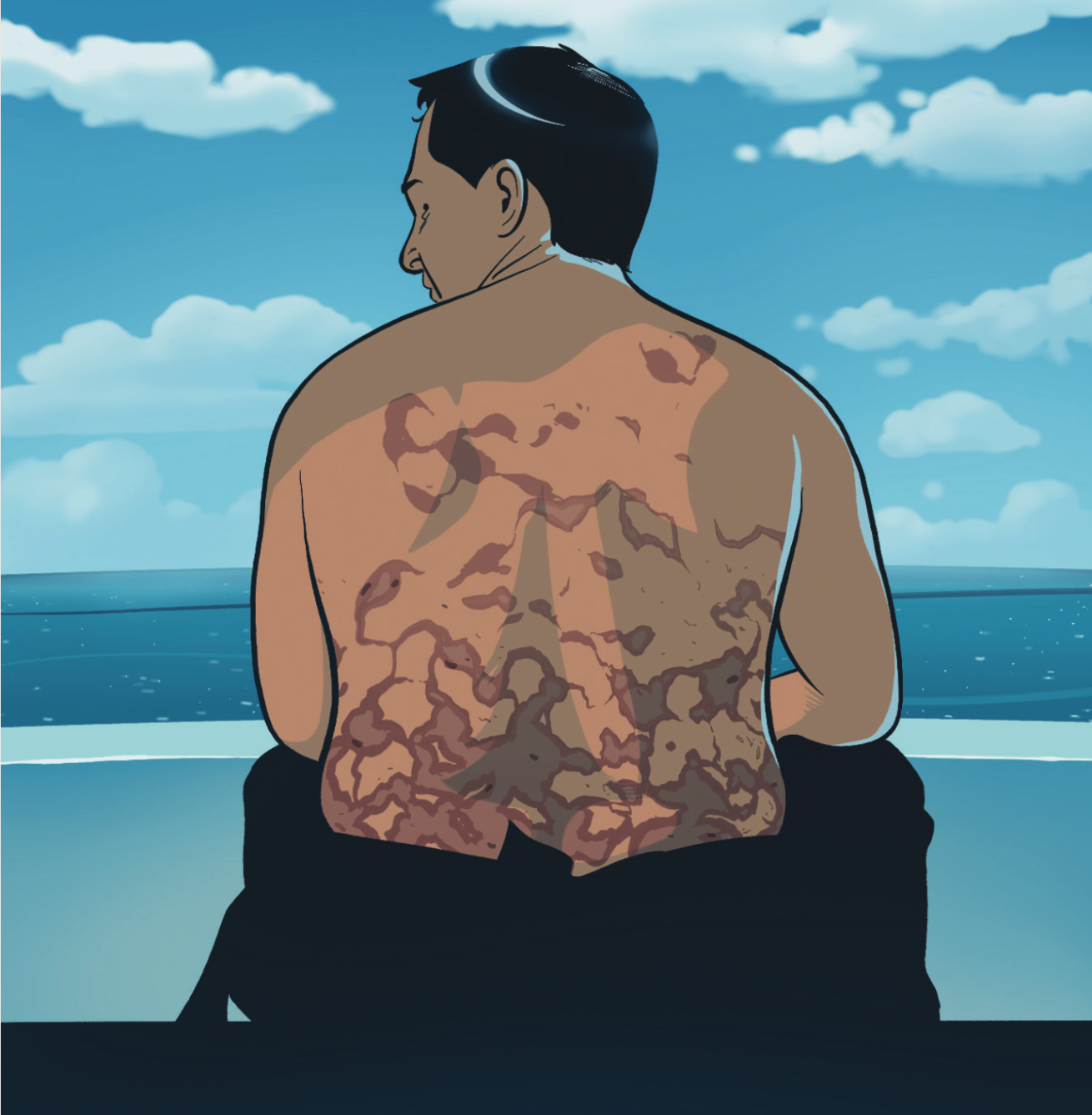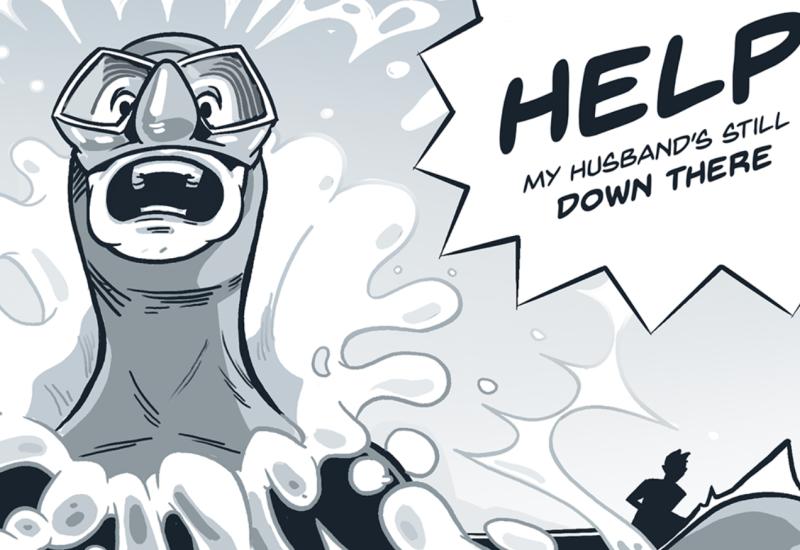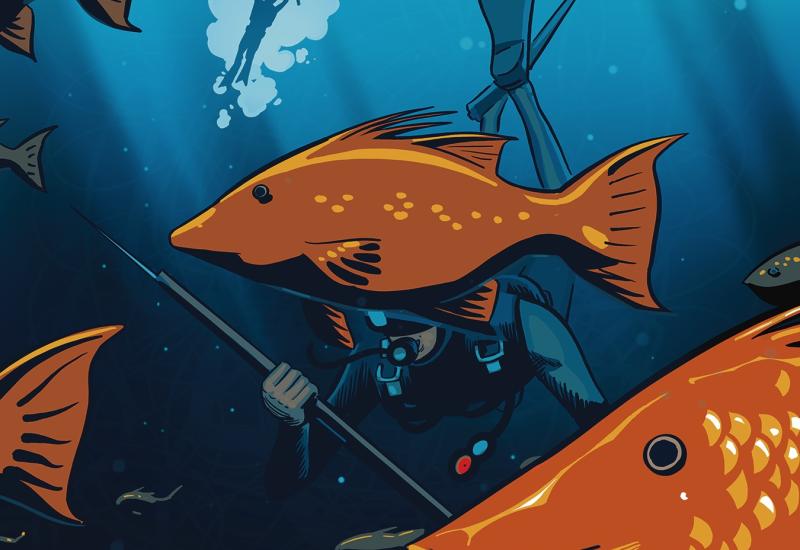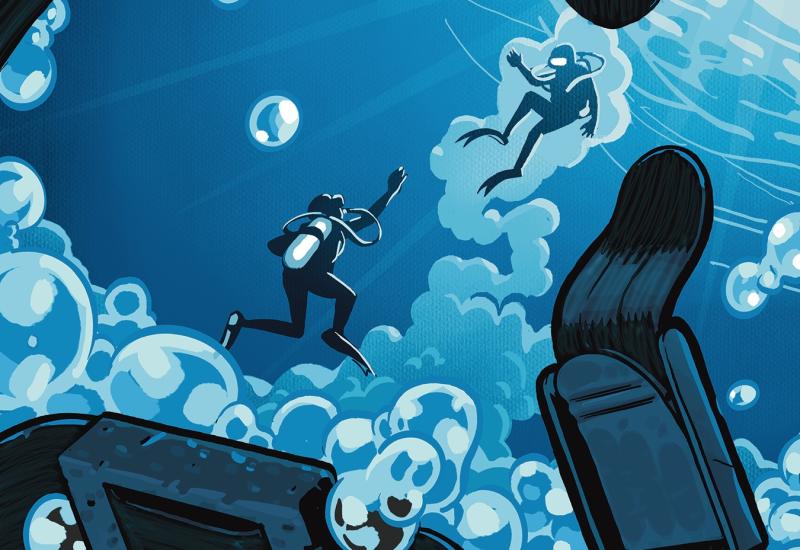A Rash of Problems | Lessons for Life

Steven P. HughesSkin bends may be harmless, but they are an indication of a high nitrogen gas load that could lead to more serious symptoms. This in an increasingly common sign of getting bent; doctors believe it could be due to a combination of computers elongating dive tips and divers carrying more body fat.
When Justin pulled his one-piece wetsuit off his shoulders, his dive buddy immediately noticed he had a rash on his back and sides.
His first thought was that Justin had been bitten by something in the water, like sea lice. But there was no sign of any sort of bites or abrasions.
And it was something Justin’s dive buddy knew he had seen before.
The Diver
Justin was a 45-year-old male with no known medical history. His doctor told Justin he was overweight, but did not feel diving was a problem. The doctor did suggest Justin watch what he ate and get more exercise.
The Dives
Justin and his buddy were on a three-day liveaboard trip, enjoying the freedom of eat, sleep, dive. They were determined to make every dive available to them.
The two were in their third day of diving. They had completed six dives using various gas mixes including air and enriched air of different concentrations. At least one dive included planned decompression stops. The water was cool, in the upper 60s, but they had generally good conditions and both divers were wearing 7 mm wetsuits.
The Accident
On the third day, Justin woke up sore and tired but wrote it off to the cold water and the dives they had made so far. He didn’t feel bad, but he didn’t feel good either. His skin itched, but he assumed that was from the wetsuit and the salt water. He didn’t mention how he was feeling to his buddy or the crew.
After their second dive, the pair planned to break for lunch. They would make one more dive that afternoon before they returned to the dock and their trip was done. Exiting the water, Justin pulled down his wetsuit to dry off and warm up. That’s when his buddy noticed the rash. On further inspection, Justin’s rash had spread from his back to his sides and across his lower abdomen. His skin looked mottled and bruised under the surface. The itching was worse than it had been that morning, and his skin was tender. Justin admitted to his dive buddy that he wasn’t feeling well. He was tired and wanted to take a nap. He said he was sure he would get his energy back after eating lunch, but when Justin’s buddy mentioned the symptoms to the crew, they had a different plan.
The captain had Justin rest on a bench and supplied him 100 percent oxygen through a scuba regulator using a tank the boat kept on hand for decompression dives. He breathed the oxygen for 45 minutes until the boat met up with emergency medical services, on its own boat. Justin was transferred to their care, and his dive buddy accompanied him to the hospital. EMS reported that Justin was conscious and responsive, although he was hypotensive (low blood pressure). He was transported to the hospital, continuing to breathe 100 percent oxygen, and he received intravenous fluids.
At the hospital, Justin denied any other symptoms such as pain, numbness or tingling, and said he had never before seen rash-like symptoms following a dive. Justin’s buddy disagreed and said he had seen Justin have similar rashes two or three times after diving, although he said this was the worst case he had seen.
The doctor who examined Justin determined the rash on Justin’s back, sides and abdomen was likely skin bends and treated him in a hyperbaric chamber with two U.S. Navy Treatment Table 6s over two days. Following the second treatment, all of Justin’s symptoms resolved. Concerned about what caused the skin bends, Justin was tested for a patent foramen ovale, and the test came back positive.
Justin did not return to diving.
Analysis
Skin bends is an increasingly common manifestation of decompression sickness. At its basic level, it is harmless and resolves in a few hours as long as there isn’t additional exposure to pressure.
Symptoms typically present themselves in fatty subcutaneous tissue in the body. These tissues have restricted blood flow, called poor perfusion. When nitrogen finds its way into these “slow” tissues, it is harder for it to work its way back out. Once the diver surfaces and water pressure is removed, the nitrogen comes out of the capillaries, causing rash-like symptoms.
A combination of longer dives, aided by dive computers, and divers carrying more body fat is thought to contribute to the rise in cases of skin bends.
One problem for Justin was that he denied, or didn’t recognize, DCS symptoms and continued diving. That’s not uncommon for divers—no one wants to be “bent.” They rationalize their symptoms and explain them away as not dive-related.
Diving after DCS symptoms are present only increases the nitrogen gas load in the body, making symptoms worse. If you have any reason to suspect you might be exhibiting symptoms related to diving, discontinue diving immediately and seek help. Skin bends may be harmless, but they are an indication of a high nitrogen gas load in the body and could lead to other more serious symptoms.
EMS personnel described Justin as being hypotensive—having low blood pressure. One potential cause for this is dehydration. Ultimately, it means there isn’t enough blood volume in his body.
The act of diving itself causes divers to urinate. It’s called immersion diuresis. Water pressure forces blood from the limbs into the body core. The body then takes steps to remove what it detects as excess fluid. That’s why you have the urge to pee in your wetsuit. On a three-day diving trip, remaining on board the entire time, and likely having an alcoholic beverage or two in the evenings, can lead to being slightly dehydrated if you don’t consciously remember to drink more water. Dehydration can compound the problems of a high nitrogen gas load, making it harder for the body to remove the nitrogen normally.
Concerned about developing the case of skin bends, and realizing it wasn’t the first time, Justin chose to be tested for a patent foramen ovale (PFO). A for men ovale is a flap between the two top chambers of a baby’s heart while it is still in its mother’s womb. That flap is open and allows the baby to receive oxygeated blood from the mother’s placenta. After birth, the flap closes because it is no longer needed; the baby now gets oxygenated blood from the lungs. In about a third of the population, the flap never fully closes. This is called a patent foramen ovale.
In daily life, a PFO is not a problem. Under normal circumstances for divers, nitrogen bubbles in the veins are filtered out by the lungs as the blood returns to the heart. If a diver with significant gas load has a PFO, and strains or otherwise performs a Valsalva maneuver, those nitrogen bubbles can be shunted through the PFO into the arterial blood circulation and lead to a host of problems. The bubbles can lodge in the brain, in joints or along nerves, causing pain, numbness, paralysis and stroke-like symptoms, or even death.
Having a PFO does not necessarily preclude you from diving, but there is a nonsurgical medical repair available if a diver tests positive for a PFO and wants to minimize risk.
Lessons for Life
- Learn the signs and symptoms of DCS. Don’t continue diving if you are exhibiting symptoms.
- Discuss your symptoms. If you are concerned you have symptoms of DCS, don’t delay. Tell someone and seek treatment.
- Take a class in diving first aid. This will help you better understand decompression sickness and what to do about it when it happens.










